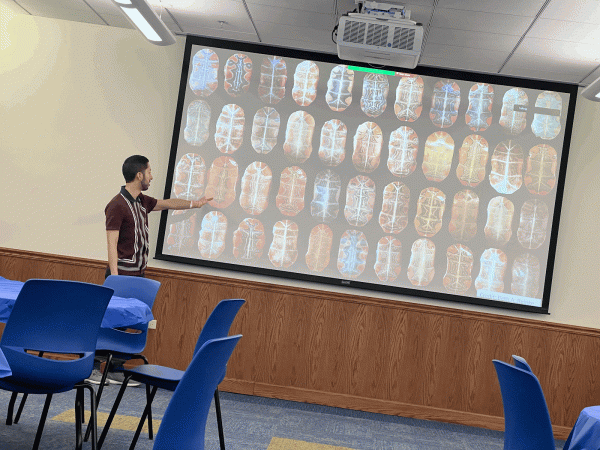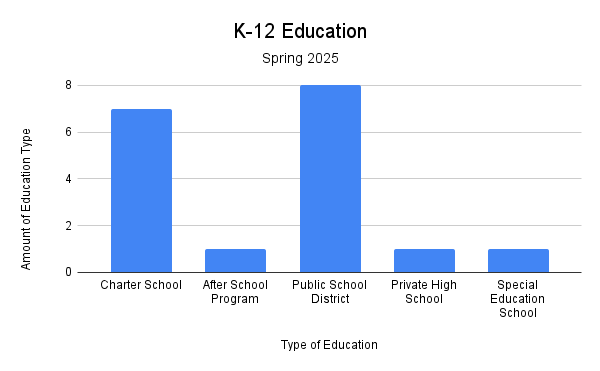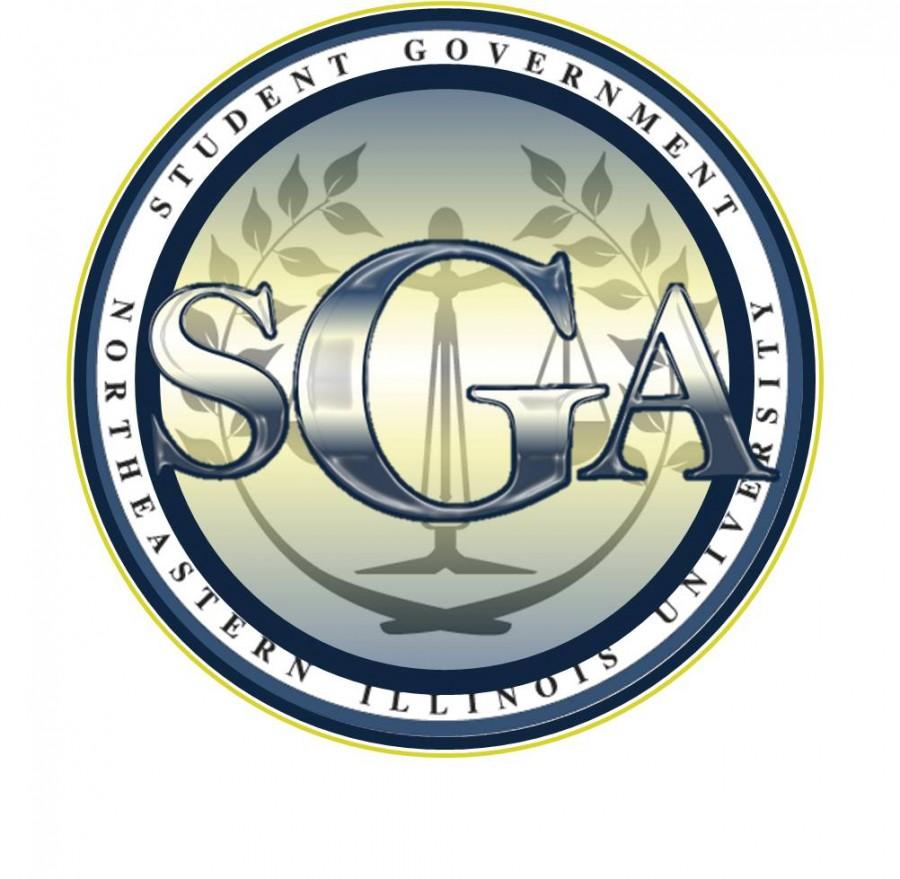The 25th biannual Mathematical and Statistical Modeling of Complex Systems (MSMCS) Workshop was on Monday, Mar. 3, 2025 and took place in the Golden Eagles and Alumni Hall located in the NEIU Student Union. This workshop marked the first of a three-day Women in Science event that brought many opportunities for students to learn, network and build hands-on skills in data analysis. The event was open to the public and provided attendees the opportunity to earn digital badges for attending multiple sessions during the conference.
From Numbers to Insights: The Power of Modeling
The MSMCS was celebrated by the NEIU Mathematics Department, Google, Microsoft, Accenture and several other leading technology companies. This biannual milestone marks 13 years of innovative collaboration and the sharing of ideas. Dr. Nabil Kahouadji, Associate Professor in Mathematics at NEIU, and Dr. Lidia Filus, Chair of the Department, delivered opening remarks by welcoming guest speakers and attendees while also acknowledging the growth and international collaboration of this workshop with the Warsaw School of Economics in Poland, which was featured during last year’s MSMCS. Dr. Kahouadji also expressed gratitude to Dr. Filus, MSMCS’s founder, for her pivotal role in establishing and sustaining the event.
Since 2019, the Warsaw School of Economics has co-hosted the event with NEIU, further enriching its global reach. A different speaker represents this institution every year, and this year, Izabela Pruchnicka-Grabias and Anna Szelągowska represented the Warsaw School of Economics as they summarized their projects for the audience.
Dr. Pruchnicka-Grabias presented her study on incorporating crypto assets into stock portfolios for risk diversification. Key findings revealed that cryptocurrencies such as Bitcoin could play a small yet impactful role in optimizing portfolios, particularly in reducing risks due to their low correlation with traditional stock markets. Her research has been accepted for publication and has significance in financial studies.
Anna’s presentation focused on the role of artificial intelligence (AI) in auditing and addressed the trade-off between algorithmic accountability and human responsibility. Analogies were made between AI and autonomous vehicles, and they emphasized efficiency and safety benefits. However, concerns around job loss, ethics and the need for regulatory oversight were noted. Her study explored auditors’ attitudes toward AI, which revealed a rich interplay among perspectives, human responsibility and trust in algorithms.
Despite skepticism about the potential of AI in risk assessment, the study showed that it had the potential to be an auxiliary tool and not a replacement for human judgment. Realistic recommendations included increasing training, defining boundaries of responsibility and reclassifying AI as a supporting resource in auditing processes. The lecture raised controversies on the future of AI in professional environments.
Dr. Scott Hagerty, Economics Professor and Chair of Geography & Environmental Studies, provided insight into the complex patterns of racial segregation in large U.S. cities and revealed its complexity and multifaceted nature. The presentation revealed that measuring segregation across different geographic scales (e.g. city, suburbs & metro region) produces differing patterns. Some cities have distinct boundaries within their city limits while others have greater diversity among their surrounding suburbs. How is segregation measured? “To measure segregation, you can see it with what’s called an isolation score, and you can actually measure the percentage of one group versus not in the group.” Dr. Hagerty said. “And then that will tell you how segregated they are. So there’s actually four of them. You can do a Gini coefficient. You can get an isolation score.”
Detroit is one of the cities that have a high segregation in the city itself but is more diverse if you go out to the suburbs. Atlanta reverses this trend,where the city core is less segregated but the suburbs are more segregated. Others,like Chicago, have a similar level of segregation in the entire metro area. It requires delving into the economic, zoning and historical patterns behind these intersecting trends to understand residential segregation and act accordingly. Remaining above such reductionist city-level data is crucial to making the most sense.
Many NEIU undergraduates gave similarly inspiring presentations during MSMCS. Valerie Perez, an undergraduate in Economics, spoke on “The Interest in Economics [and] how the shocks to the market in early 80’s and 2007 impacted interest.” Nuha Taher, undergraduate in Biology, and Aisvarya Prabhanandan, undergraduate in Genetics, gave a talk on “Modeling Tumor Growth using Machine Learning Approaches”. Alain Iniestra, an undergraduate student, spoke about his work on “Pattern Diversity and Heritability in a Widespread Freshwater Turtle Species”.
 Adam Saleh, a research associate from University of Illinois at Chicago (UIC) talked about his journey at the educational institution. He gave many useful tips to students on how to find a research position and to create a good poster. He also talked about his ongoing research on type I Diabetes Mellitus. Marek Michalski was the last speaker for the MSMCS workshop. He was very excited to share his research on Collaboration agreements and game theory in supply chain asymmetric relationships.
Adam Saleh, a research associate from University of Illinois at Chicago (UIC) talked about his journey at the educational institution. He gave many useful tips to students on how to find a research position and to create a good poster. He also talked about his ongoing research on type I Diabetes Mellitus. Marek Michalski was the last speaker for the MSMCS workshop. He was very excited to share his research on Collaboration agreements and game theory in supply chain asymmetric relationships.
Datathon 2025: Tackling Economic and Health Challenges
These sessions were followed by lunch and the 2025 edition of the Center of Health Datathon Challenge—NEIU’s second offering of a time-bound competition through which students gained hands-on experience on statistical analysis. Dr. Christina Ciecierski, economics professor and advisor at NEIU, welcomed all the team members on the second day of the conference.The theme for the challenge was “Economic Dynamics and Health Disparities: A Global Perspective”. The session was led by Hardik Marfatia, economics professor at NEIU, who introduced students to the art of deploying various statistical models through the use of Microsoft Excel.
After the instructor-led session, team-led sessions began,through which students formed teams and worked together to complete their own, independently crafted modeling techniques. Each team member who participated in the Datathon Challenge received a digital badge for display on their LinkedIn and other professional social media portals. Also, teams who participated and completed a live presentation qualified for a chance to present their work to a diverse panel of judges during the second day of the Datathon. $300 per team member was awarded for first place. For the second place, each team member received $200. Members in third place received $100. This was a great opportunity for students to showcase their talent. Both undergraduate and graduate students participated in the Datathon 2025.






